-
Executive Summary
-
Market Introduction
-
Definition
-
2.2
-
Scope of the Study
-
List of Assumptions
-
Market Structure
-
2.5
-
Key Takeaways
-
Key Buying Criteria
-
Market Insights
-
Research Methodology
-
Research Process
-
Primary Research
-
Secondary Research
-
Market Size Estimation
-
Forecast Model
-
Market Dynamics
-
Introduction
-
Drivers
- Growing
- Increasing awareness regarding security and safety
- Ease of installation
- Drivers Impact Analysis
-
adoption of smart homes
-
Opportunities
- Advancement in wireless IP cameras
- Emerging smart city initiatives
-
Challenges
- Issues regarding privacy and loss of data
-
5.4.2
-
High cost of cameras and its maintenance
-
Supply Chain Analysis
- Product Assemblers
- Distribution & Sales
- Service Providers
- End-Users
-
5.5.1
-
Optical & Electronic Component Manufacturers
-
Porter’s Five Forces Model
- Threat of New Entrants
- Bargaining Power of Buyers
- Threat
- Intensity of Rivalry
-
5.6.2
-
Bargaining Power of Suppliers
-
of Substitutes
-
Global Home Security
-
Camera Market, By Product
-
Overview
- Dome Security Camera
- IP Security Camera
- Thermal Security
- PTZ Security Camera
- Others
-
6.1.2
-
Bullet Security Camera
-
Camera
-
Global Home
-
Security Camera Market, By Type
-
Overview
- Indoor Security Camera
- Outdoor Security Camera
-
Global Home Security Camera Market,
-
By Resolution
-
Overview
- Non-HD
- HD
-
Global
-
Home Security Camera Market, By Services
-
Overview
- Professional
- Managed Services
-
Services
-
Services
-
Global Home Security Camera Market,
-
By Region
-
Introduction
-
North America
- U.S.
- Mexico
-
10.2.2
-
Canada
-
Europe
- Germany
- U.K
- France
- Spain
- Rest of Europe
-
Asia Pacific
- China
- Japan
- India
- Rest of Asia Pacific
-
Rest of the World
- The Middle East & Africa
- Latin
-
America
-
Competitive Landscape
-
Competitive Landscape Overview
-
Competitive Benchmarking
-
Company Profiles
-
Hangzhou
- Company Overview
- Products Offerings
- Key Developments
- SWOT Analysis
- Key Strategy
-
Hikvision Digital Technology Co. Ltd (China)
-
12.1.2
-
Financial Overview
-
Motorola Solutions, Inc.
- Company Overview
- Financial Overview
- Key Developments
- SWOT Analysis
-
(Motorola Home)
-
12.2.3
-
Products Offerings
-
12.2.6
-
Key Strategy
-
Shenzhen Leshi Video Tech. Co., Ltd (China)
- Company
- Products Offerings
-
Overview
-
Netgear, Inc. (Arlo)
- Financial Overview
- Products Offerings
- Key Developments
- SWOT Analysis
- Key Strategy
-
12.4.1
-
Company Overview
-
ADT Inc. (U.S.)
- Company Overview
- Financial Overview
- Products Offerings
- Key Developments
- SWOT Analysis
- Key Strategy
-
FrontPoint Security Solutions, LLC (U.S.)
- Products Offerings
- Key Developments
- SWOT Analysis
-
12.6.1
-
Company Overview
-
Vivint, Inc. (U.S.)
- Company Overview
- Products Offerings
- Key Developments
- SWOT Analysis
-
SimpliSafe (U.S.)
- Company Overview
- Products Offering
- Key Developments
-
Panasonic Corporation (Japan)
- Company
- Financial Overview
- Products Offerings
- SWOT Analysis
- Key Strategy
-
Overview
-
12.9.4
-
Key Developments
-
Godrej
- Company Overview
- Financial Overview
- Products Offerings
- SWOTAnalysis
- Key Strategy
-
Security Solutions (Godrej & Boyce Mfg. Co. Ltd.)
-
Nest Labs, Inc. (Alphabet)
- Company
- Financial Overview
- Products Offerings
-
Overview
-
12.11.4
-
Key Developments
-
Conclusion
-
Key Findings
- CEO’s
- Unmet Needs
- Key Companies to Watch
-
Viewpoint
-
13.1.4
-
Prediction
-
Appendix
-
Discussion Blue Print
-
List of
-
Tables
-
MARKET SYNOPSIS
-
LIST OF ASSUMPTIONS
-
TABLE
-
GLOBAL HOME SECURITY CAMERA MARKET, BY PRODUCT, 2020-2027 (USD MILLION)
-
TABLE
-
GLOBAL HOME SECURITY CAMERA MARKET, BY TYPE, 2020-2027 (USD MILLION)
-
TABLE
-
GLOBAL HOME SECURITY CAMERA MARKET, BY RESOLUTION, 2020-2027 (USD MILLION)
-
GLOBAL HOME SECURITY CAMERA MARKET, BY SERVICES, 2020-2027 (USD MILLION)
-
GLOBAL HOME SECURITY CAMERA MARKET, BY PROFESSIONAL SERVICES, 2020-2027
-
(USD MILLION)
-
GLOBAL HOME SECURITY CAMERA MARKET, BY REGION, 2020-2027
-
(USD MILLION)
-
NORTH AMERICA: HOME SECURITY CAMERA MARKET, BY COUNTRY,
-
NORTH AMERICA: HOME SECURITY CAMERA MARKET,
-
BY PRODUCT, 2020-2027 (USD MILLION)
-
NORTH AMERICA: HOME SECURITY CAMERA
-
MARKET, BY TYPE, 2020-2027 (USD MILLION)
-
NORTH AMERICA: HOME SECURITY
-
CAMERA MARKET, BY SERVICES, 2020-2027 (USD MILLION)
-
NORTH AMERICA:
-
HOME SECURITY CAMERA MARKET, BY PROFESSIONAL SERVICES, 2020-2027 (USD MILLION)
-
U.S.: HOME SECURITY CAMERA MARKET, BY PRODUCT, 2020-2027 (USD MILLION)
-
U.S.: HOME SECURITY CAMERA MARKET, BY TYPE, 2020-2027 (USD MILLION)
-
U.S.: HOME SECURITY CAMERA MARKET, BY RESOLUTION, 2020-2027 (USD MILLION)
-
U.S.: HOME SECURITY CAMERA MARKET, BY SERVICES, 2020-2027 (USD MILLION)
-
U.S.: HOME SECURITY CAMERA MARKET, BY PROFESSIONAL SERVICES, 2020-2027
-
(USD MILLION)
-
CANADA: HOME SECURITY CAMERA MARKET, BY PRODUCT, 2020-2027
-
(USD MILLION)
-
CANADA: HOME SECURITY CAMERA MARKET, BY TYPE, 2020-2027
-
(USD MILLION)
-
CANADA: HOME SECURITY CAMERA MARKET, BY RESOLUTION,
-
CANADA: HOME SECURITY CAMERA MARKET, BY SERVICES,
-
CANADA: HOME SECURITY CAMERA MARKET, BY PROFESSIONAL
-
SERVICES, 2020-2027 (USD MILLION)
-
MEXICO: HOME SECURITY CAMERA MARKET,
-
BY PRODUCT, 2020-2027 (USD MILLION)
-
MEXICO: HOME SECURITY CAMERA MARKET,
-
BY TYPE, 2020-2027 (USD MILLION)
-
MEXICO: HOME SECURITY CAMERA MARKET,
-
BY RESOLUTION, 2020-2027 (USD MILLION)
-
MEXICO: HOME SECURITY CAMERA
-
MARKET, BY SERVICES, 2020-2027 (USD MILLION)
-
MEXICO: HOME SECURITY
-
CAMERA MARKET, BY PROFESSIONAL SERVICES, 2020-2027 (USD MILLION)
-
EUROPE
-
HOME SECURITY CAMERA MARKET, BY COUNTRY, 2020-2027 (USD MILLION)
-
EUROPE:
-
HOME SECURITY CAMERA MARKET, BY PRODUCT, 2020-2027 (USD MILLION)
-
EUROPE:
-
HOME SECURITY CAMERA MARKET, BY TYPE, 2020-2027 (USD MILLION)
-
EUROPE:
-
HOME SECURITY CAMERA MARKET, BY RESOLUTION, 2020-2027 (USD MILLION)
-
TABLE 34
-
EUROPE: HOME SECURITY CAMERA MARKET, BY SERVICES, 2020-2027 (USD MILLION)
-
TABLE
-
EUROPE: HOME SECURITY CAMERA MARKET, BY PROFESSIONAL SERVICES, 2020-2027 (USD
-
MILLION)
-
GERMANY: HOME SECURITY CAMERA MARKET, BY PRODUCT, 2020-2027
-
(USD MILLION)
-
GERMANY: HOME SECURITY CAMERA MARKET, BY TYPE, 2020-2027
-
(USD MILLION)
-
GERMANY: HOME SECURITY CAMERA MARKET, BY RESOLUTION,
-
GERMANY: HOME SECURITY CAMERA MARKET, BY SERVICES,
-
GERMANY: HOME SECURITY CAMERA MARKET, BY PROFESSIONAL
-
SERVICES, 2020-2027 (USD MILLION)
-
U.K: HOME SECURITY CAMERA MARKET,
-
BY PRODUCT, 2020-2027 (USD MILLION)
-
U.K: HOME SECURITY CAMERA MARKET,
-
BY TYPE, 2020-2027 (USD MILLION) 72
-
U.K: HOME SECURITY CAMERA MARKET,
-
BY RESOLUTION, 2020-2027 (USD MILLION)
-
U.K: HOME SECURITY CAMERA MARKET,
-
BY SERVICES, 2020-2027 (USD MILLION)
-
U.K: HOME SECURITY CAMERA MARKET,
-
BY PROFESSIUONAL SERVICES, 2020-2027 (USD MILLION)
-
FRANCE: HOME SECURITY
-
CAMERA MARKET, BY PRODUCT, 2020-2027 (USD MILLION)
-
FRANCE: HOME SECURITY
-
CAMERA MARKET, BY TYPE, 2020-2027 (USD MILLION)
-
FRANCE: HOME SECURITY
-
CAMERA MARKET, BY RESOLUTION, 2020-2027 (USD MILLION)
-
FRANCE: HOME
-
SECURITY CAMERA MARKET, BY SERVICES, 2020-2027 (USD MILLION)
-
FRANCE:
-
HOME SECURITY CAMERA MARKET, BY PROFESSIONAL SERVICES, 2020-2027 (USD MILLION)
-
SPAIN: HOME SECURITY CAMERA MARKET, BY PRODUCT, 2020-2027 (USD MILLION)
-
SPAIN: HOME SECURITY CAMERA MARKET, BY TYPE, 2020-2027 (USD MILLION)
-
SPAIN: HOME SECURITY CAMERA MARKET, BY RESOLUTION, 2020-2027 (USD MILLION)
-
SPAIN: HOME SECURITY CAMERA MARKET, BY PROFESSIONAL SERVICES, 2020-2027
-
(USD MILLION)
-
REST OF EUROPE: HOME SECURITY CAMERA MARKET, BY PRODUCT,
-
REST OF EUROPE: HOME SECURITY CAMERA MARKET,
-
BY TYPE, 2020-2027 (USD MILLION)
-
REST OF EUROPE: HOME SECURITY CAMERA
-
MARKET, BY RESOLUTION, 2020-2027 (USD MILLION)
-
U.K: HOME SECURITY
-
CAMERA MARKET, BY SERVICES, 2020-2027 (USD MILLION)
-
U.K: HOME SECURITY
-
CAMERA MARKET, BY PROFESSIONAL SERVICES, 2020-2027 (USD MILLION)
-
ASIA
-
PACIFIC HOME SECURITY CAMERA MARKET, BY COUNTRY, 2020-2027 (USD MILLION)
-
TABLE
-
ASIA PACIFIC: HOME SECURITY CAMERA MARKET, BY PRODUCT, 2020-2027 (USD MILLION)
-
ASIA PACIFIC: HOME SECURITY CAMERA MARKET, BY TYPE, 2020-2027 (USD MILLION)
-
ASIA PACIFIC: HOME SECURITY CAMERA MARKET, BY RESOLUTION, 2020-2027 (USD
-
MILLION)
-
ASIA PACIFIC: HOME SECURITY CAMERA MARKET, BY SERVICES, 2020-2027
-
(USD MILLION)
-
ASIA PACIFIC: HOME SECURITY CAMERA MARKET, BY PROFESSIONAL
-
SERVICES, 2020-2027 (USD MILLION)
-
CHINA: HOME SECURITY CAMERA MARKET,
-
BY PRODUCT, 2020-2027 (USD MILLION)
-
CHINA: HOME SECURITY CAMERA MARKET,
-
BY TYPE, 2020-2027 (USD MILLION)
-
CHINA: HOME SECURITY CAMERA MARKET,
-
BY RESOLUTION, 2020-2027 (USD MILLION)
-
CHINA: HOME SECURITY CAMERA
-
MARKET, BY SERVICES, 2020-2027 (USD MILLION)
-
CHINA: HOME SECURITY
-
CAMERA MARKET, BY PROFESSIONAL SERVICES, 2020-2027 (USD MILLION)
-
JAPAN:
-
HOME SECURITY CAMERA MARKET, BY PRODUCT, 2020-2027 (USD MILLION)
-
JAPAN:
-
HOME SECURITY CAMERA MARKET, BY TYPE, 2020-2027 (USD MILLION)
-
JAPAN:
-
HOME SECURITY CAMERA MARKET, BY RESOLUTION, 2020-2027 (USD MILLION)
-
TABLE 75
-
JAPAN: HOME SECURITY CAMERA MARKET, BY SERVICES, 2020-2027 (USD MILLION)
-
TABLE
-
JAPAN: HOME SECURITY CAMERA MARKET, BY PROFESSIONAL SERVICES, 2020-2027 (USD
-
MILLION)
-
INDIA: HOME SECURITY CAMERA MARKET, BY PRODUCT, 2020-2027
-
(USD MILLION)
-
INDIA: HOME SECURITY CAMERA MARKET, BY TYPE, 2020-2027
-
(USD MILLION)
-
INDIA: HOME SECURITY CAMERA MARKET, BY RESOLUTION, 2020-2027
-
(USD MILLION)
-
INDIA: HOME SECURITY CAMERA MARKET, BY SERVICES, 2020-2027
-
(USD MILLION)
-
INDIA: HOME SECURITY CAMERA MARKET, BY PROFESSIONAL
-
SERVICES, 2020-2027 (USD MILLION)
-
REST OF ASIA PACIFIC: HOME SECURITY
-
CAMERA MARKET, BY PRODUCT, 2020-2027 (USD MILLION)
-
REST OF ASIA PACIFIC:
-
HOME SECURITY CAMERA MARKET, BY TYPE, 2020-2027 (USD MILLION)
-
REST
-
OF ASIA PACIFIC: HOME SECURITY CAMERA MARKET, BY RESOLUTION, 2020-2027 (USD MILLION)
-
REST OF ASIA PACIFIC: HOME SECURITY CAMERA MARKET, BY SERVICES, 2020-2027
-
(USD MILLION)
-
REST OF ASIA PACIFIC: HOME SECURITY CAMERA MARKET, BY
-
PROFESSIONAL SERVICES, 2020-2027 (USD MILLION)
-
REST OF THE WORLD HOME
-
SECURITY CAMERA MARKET, BY COUNTRY, 2020-2027 (USD MILLION)
-
REST OF
-
THE WORLD: HOME SECURITY CAMERA MARKET, BY PRODUCT, 2020-2027 (USD MILLION)
-
TABLE
-
REST OF THE WORLD: HOME SECURITY CAMERA MARKET, BY TYPE, 2020-2027 (USD MILLION)
-
REST OF THE WORLD: HOME SECURITY CAMERA MARKET, BY RESOLUTION, 2020-2027
-
(USD MILLION)
-
REST OF THE WORLD: HOME SECURITY CAMERA MARKET, BY PROFESSIONAL
-
SERVICES, 2020-2027 (USD MILLION)
-
THE MIDDLE EAST & AFRICA: HOME
-
SECURITY CAMERA MARKET, BY PRODUCT, 2020-2027 (USD MILLION)
-
THE MIDDLE
-
EAST & AFRICA: HOME SECURITY CAMERA MARKET, BY TYPE, 2020-2027 (USD MILLION)
-
THE MIDDLE EAST & AFRICA: HOME SECURITY CAMERA MARKET, BY RESOLUTION,
-
THE MIDDLE EAST & AFRICA: HOME SECURITY
-
CAMERA MARKET, BY SERVICES, 2020-2027 (USD MILLION)
-
THE MIDDLE EAST
-
& AFRICA: HOME SECURITY CAMERA MARKET, BY PROFESSIONAL SERVICES, 2020-2027 (USD
-
MILLION)
-
LATIN AMERICA: HOME SECURITY CAMERA MARKET, BY PRODUCT, 2020-2027
-
(USD MILLION)
-
LATIN AMERICA: HOME SECURITY CAMERA MARKET, BY TYPE,
-
LATIN AMERICA: HOME SECURITY CAMERA MARKET,
-
BY RESOLUTION, 2020-2027 (USD MILLION) 96
-
LATIN AMERICA: HOME SECURITY
-
CAMERA MARKET, BY SERVICES, 2020-2027 (USD MILLION)
-
LATIN AMERICA:
-
HOME SECURITY CAMERA MARKET, BY PROFESSIONAL SERVICES, 2020-2027 (USD MILLION)
-
List of Figures
-
GLOBAL HOME SECURITY CAMERA MARKET: MARKET
-
STRUCTURE
-
KEY TAKEAWAYS OF THE HOME SECURITY CAMERA MARKET
-
FIGURE
-
KEY BUYING CRITERIA OF HOME SECURITY CAMERA
-
NORTH AMERICA MARKET
-
SIZE & MARKET SHARE BY COUNTRY (2020 VS 2027)
-
EUROPE MARKET SIZE
-
& MARKET SHARE BY COUNTRY (2020 VS 2027)
-
ASIA-PACIFIC & MARKET
-
SHARE BY COUNTRY (2020 VS 2027)
-
REST OF THE WORLD MARKET SIZE &
-
MARKET SHARE BY COUNTRY (2020 VS 2027)
-
HOME SECURITY CAMERA MARKET,
-
BY REGION, 2020
-
RESEARCH PROCESS OF MRFR
-
TOP DOWN &
-
BOTTOM UP APPROACH
-
DRIVERS, OPPORTUNITIES AND CHALLENGES ANALYSIS
-
OF GLOBAL HOME SECURITY CAMERA MARKET
-
DRIVERS IMPACT ANALYSIS: ABC
-
MARKET
-
SUPPLY CHAIN: HOME SECURITY CAMERA MARKET
-
GLOBAL
-
HOME SECURITY CAMERA MARKET, BY PRODUCT, 2020 TO 2027 (USD MILLION)
-
FIGURE
-
GLOBAL HOME SECURITY CAMERA MARKET, BY TYPE, 2020 TO 2027 (USD MILLION)
-
FIGURE
-
GLOBAL HOME SECURITY CAMERA MARKET, BY RESOLUTION, 2020 TO 2027 (USD MILLION)
-
GLOBAL HOME SECURITY CAMERA MARKET, BY SERVICES, 2020 TO 2027 (USD MILLION)
-
GLOBAL HOME SECURITY CAMERA MARKET, BY REGION, 2020 TO 2027 (USD MILLION)
-
NORTH AMERICA: HOME SECURITY CAMERA MARKET SHARE, BY COUNTRY, 2020 (%
-
SHARE)
-
NORTH AMERICA: HOME SECURITY CAMERA MARKET, BY PRODUCT, 2020
-
TO 2027 (USD MILLION)
-
NORTH AMERICA HOME SECURITY CAMERA MARKET,
-
BY TYPE, 2020 TO 2027 (USD MILLION)
-
NORTH AMERICA HOME SECURITY CAMERA
-
MARKET, BY RESOLUTION, 2020 TO 2027 (USD MILLION)
-
NORTH AMERICA HOME
-
SECURITY CAMERA MARKET, BY SERVICES, 2020 TO 2027 (USD MILLION)
-
EUROPE:
-
HOME SECURITY CAMERA MARKET SHARE, BY COUNTRY, 2020 (% SHARE)
-
EUROPE:
-
HOME SECURITY CAMERA MARKET, BY PRODUCT, 2020 TO 2027 (USD MILLION)
-
FIGURE
-
EUROPE HOME SECURITY CAMERA MARKET, BY TYPE, 2020 TO 2027 (USD MILLION)
-
FIGURE
-
EUROPE HOME SECURITY CAMERA MARKET, BY RESOLUTION, 2020 TO 2027 (USD MILLION)
-
EUROPE HOME SECURITY CAMERA MARKET, BY SERVICES, 2020 TO 2027 (USD MILLION)
-
ASIA PACIFIC: HOME SECURITY CAMERA MARKET SHARE, BY COUNTRY, 2020 (%
-
SHARE)
-
ASIA PACIFIC: HOME SECURITY CAMERA MARKET, BY PRODUCT, 2020
-
TO 2027 (USD MILLION)
-
ASIA PACIFIC HOME SECURITY CAMERA MARKET, BY
-
TYPE, 2020 TO 2027 (USD MILLION)
-
ASIA PACIFIC HOME SECURITY CAMERA
-
MARKET, BY RESOLUTION, 2020 TO 2027 (USD MILLION)
-
ASIA PACIFIC HOME
-
SECURITY CAMERA MARKET, BY SERVICES, 2020 TO 2027 (USD MILLION)
-
REST
-
OF THE WORLD: HOME SECURITY CAMERA MARKET SHARE, BY COUNTRY, 2020 (% SHARE)
-
FIGURE
-
REST OF THE WORLD: HOME SECURITY CAMERA MARKET, BY PRODUCT, 2020 TO 2027 (USD
-
MILLION)
-
REST OF THE WORLD HOME SECURITY CAMERA MARKET, BY TYPE,
-
REST OF THE WORLD HOME SECURITY CAMERA
-
MARKET, BY RESOLUTION, 2020 TO 2027 (USD MILLION)
-
REST OF THE WORLD
-
HOME SECURITY CAMERA MARKET, BY SERVICES, 2020 TO 2027 (USD MILLION)
-
FIGURE
-
BENCHMARKING OF MAJOR COMPETITORS

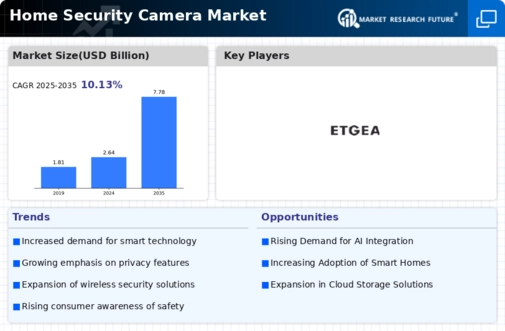

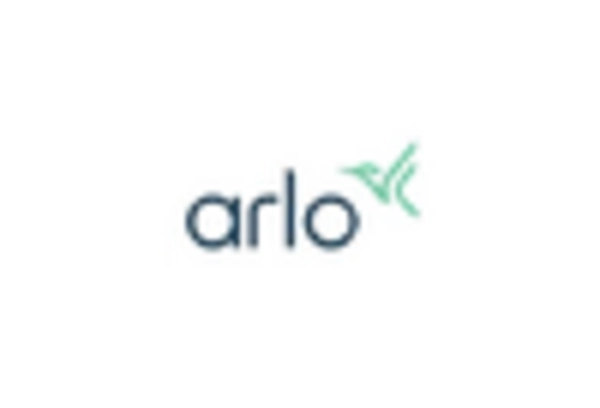
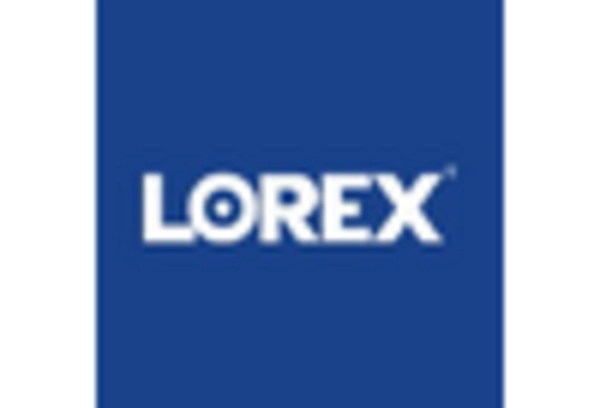


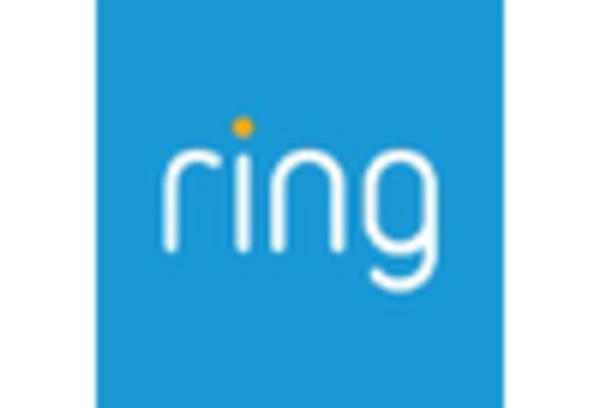
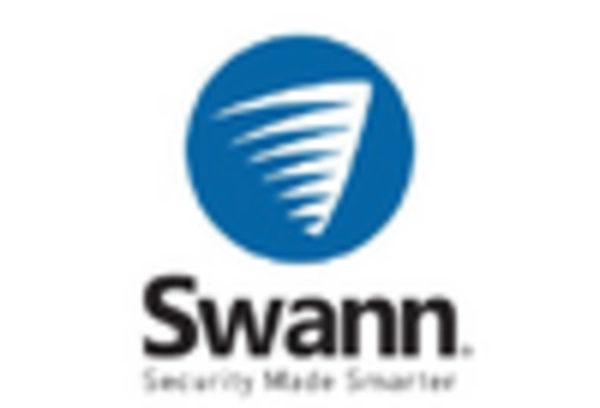

Leave a Comment